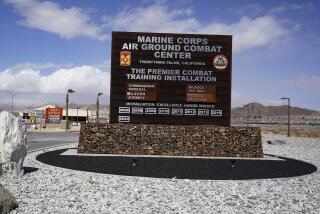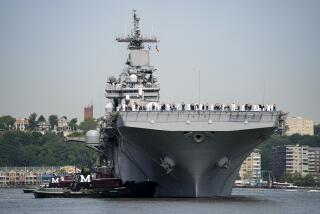Replacement for Marines’ beleaguered amphibious vehicle set to deploy for first time
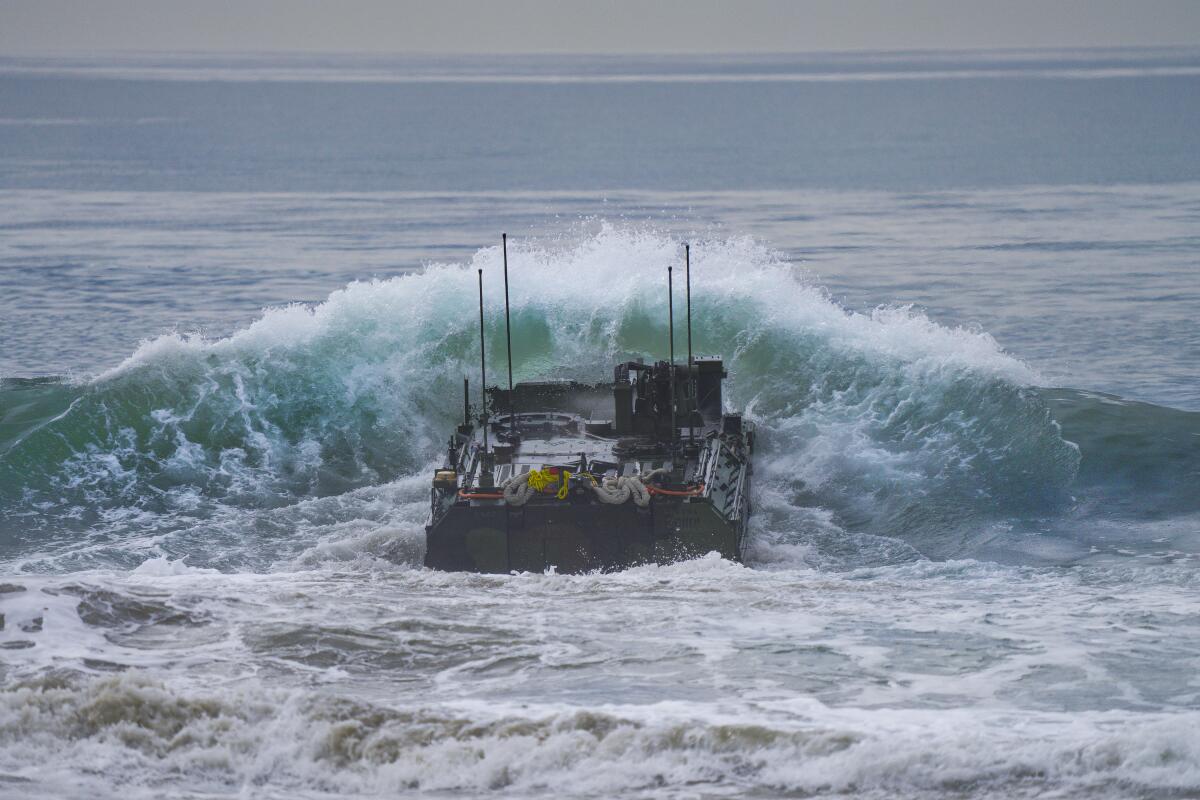
- Share via
Camp Pendleton — As disciplinary hearings continued at Camp Pendleton for Marine Corps officers involved in the deadly sinking of an amphibious vehicle in 2020, a new type of amphibious troop carrier splashed into the chilly Pacific waters at the west end of the base as the service prepared for its first deployment.
The Amphibious Combat Vehicle, or ACV, has been in development for years as a replacement for the Vietnam War-era Assault Amphibious Vehicle, commonly called an AAV or “amtrack.” The service’s need for new amphibious transports was brought to the forefront in July 2020 when the 35-year-old amtrack sank off the coast of San Diego, costing the lives of eight Marines and a sailor.
The Marines of 3rd Amphibious Assault Battalion, alongside troops from the Japanese Ground Self-Defense Force, took their ACVs into the sea last week for the first time since the service halted all waterborne amphibious operations in December. The Corps at that time pulled AAVs from waterborne operations permanently, barring any crisis or other need; they continue to serve on land. The new ACVs also were pulled from waterborne use after an issue with their tow ropes was found. That’s been corrected, the Marines said, and operations resumed a week ago.
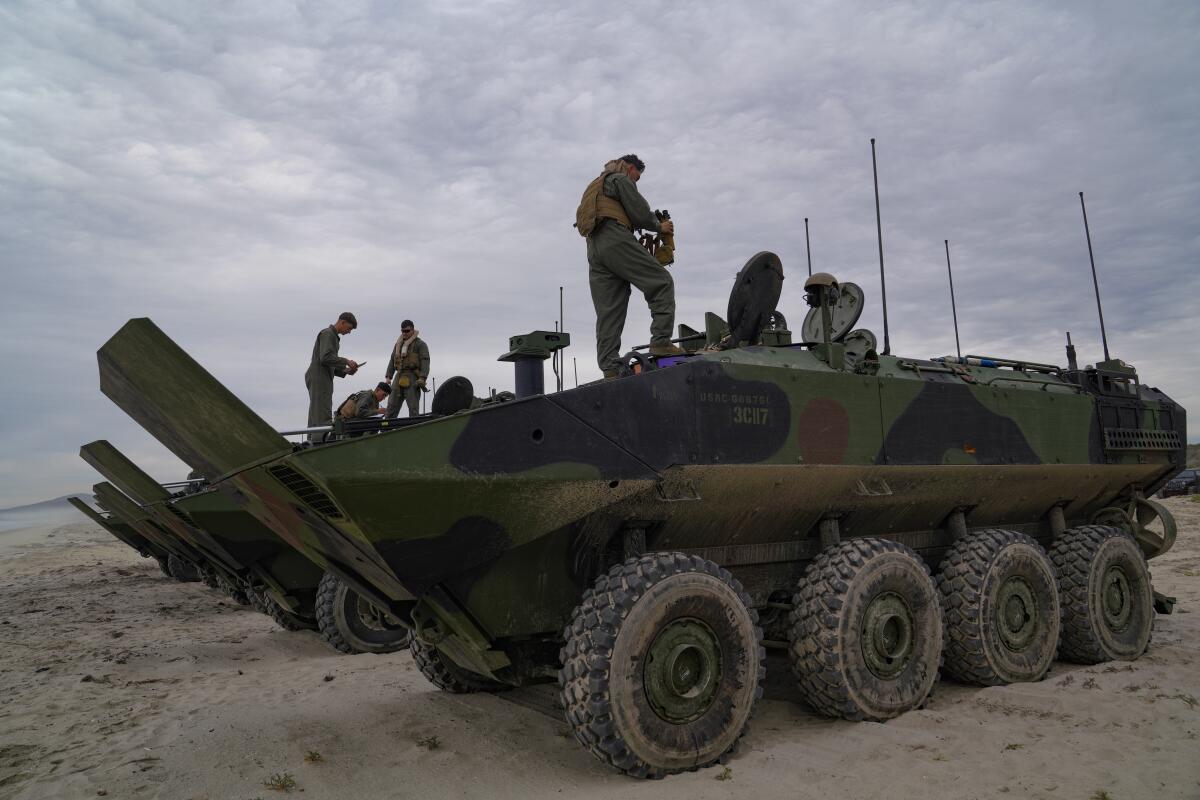
Maj. Justin Davis, the operations officer for the battalion, called the ACV an “evolutionary improvement” over the AAV. ACVs will replace AAVs over the next decade as the Corps plans to buy hundreds of the vehicles.
“As far as force protection,” Davis said, “there’s really just no comparison at all. The ACV is far superior to the AAV in respect to the protection and armor it provides Marines.”
Unlike the AAVs, which had bench seats for troops, Davis said, the ACV is equipped with individual blast-attenuating seats to protect Marines from mines and improvised explosive devices.
A Marine lieutenant colonel and sergeant face disciplinary hearings this week for their roles in a series of failures that led to nine deaths in 2020.
The operation, completed Thursday, is the first time the vehicles have conducted waterborne operations as part of a named exercise, according to 1st Lt. Charlotte Dennis, a spokesperson for the 15th Marine Expeditionary Unit, or MEU. The exercise — called “Iron Fist” — is held on Camp Pendleton every year with U.S. Marines and Japanese self-defense forces.
The Marines’ struggle with the previous generation of armored troop carriers comes as the service is two years into a decade-long plan to refocus its missions from land-based combat to ship-to-shore amphibious operations, with the winding down of U.S. wars in Iraq and Afghanistan and rising tensions with Russia and China.
The ACVs training with the 15th MEU at Camp Pendleton during this exercise will be the first to deploy with an MEU, Dennis said. That deployment will be with the 13th MEU, also based at Camp Pendleton.
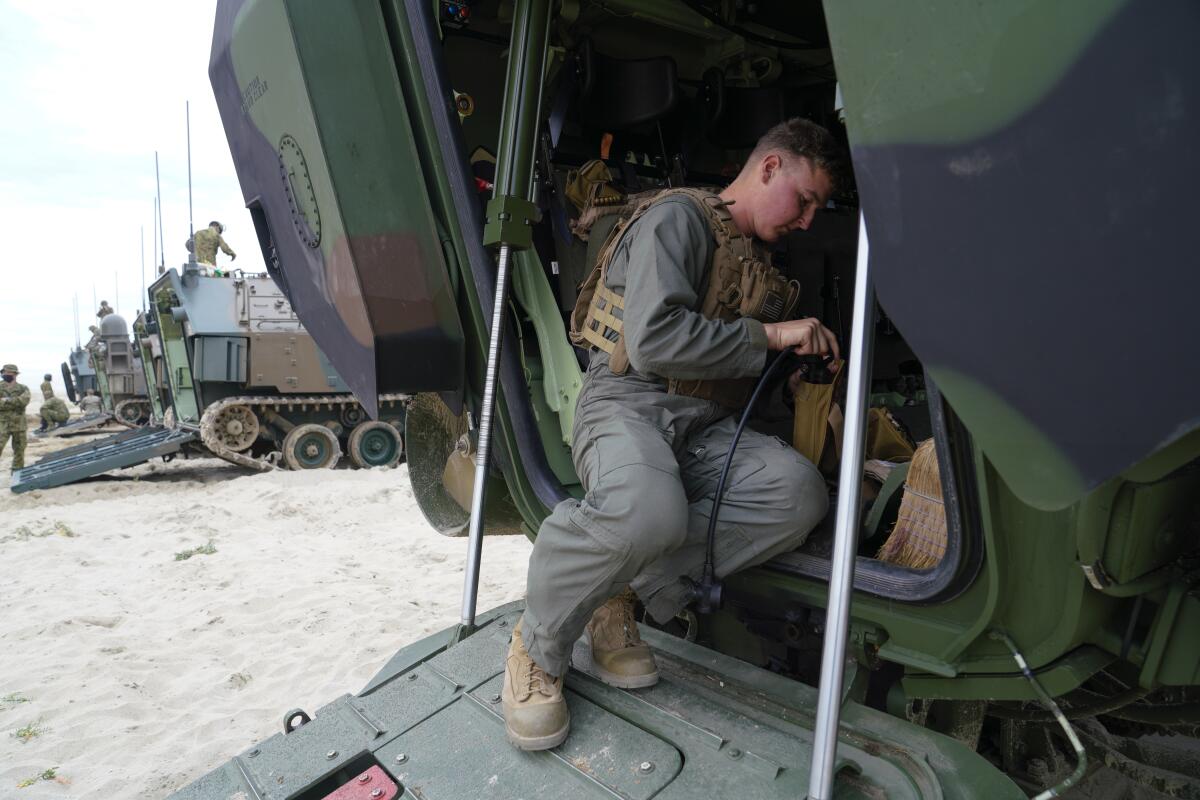
Marine Corps’ investigations into the 2020 sinking found that the infantry Marines riding in the vehicles were not all fully swim qualified, nor had they all been trained in deep-water escape procedures, due in part to the pressures of the pandemic and the deep-water trainer on Camp Pendleton being down for maintenance while the Marines were preparing for deployment.
The incident led the Corps to revamp its training requirements for Marines who will ride in the vehicles, including swim qualifications and underwater escape training, among others. That was why Thursday’s operations did not include infantry Marines from 2nd Battalion, 4th Marines riding in the vehicles yet, Davis said.
“Those infantrymen from [2/4] ... are not qualified to ride in the back of the ACVs at this time,” Davis said. “This is all safety measures as a result of the 15th MEU incident back in 30 July, 2020, and all the follow-on investigations.”

Elsewhere on Camp Pendleton, administrative boards continued for leaders identified by those investigations as bearing some responsibility in the training and maintenance oversight that investigators say led to the AAV’s sinking.
A board of inquiry into the commander of the infantry company involved in the accident wrapped up Friday on the base. Capt. George Hepler, the commander of Bravo Company, 1st Battalion, 4th Marines, was removed from command in the months following the deaths. He’s accused of substandard performance and dereliction of duty and faces separation from the Marines and an other-than-honorable discharge.
The results of Hepler’s board, and several others either completed or still to come, will not be announced by the Marines until they’ve all been finished, the Corps said last week.
More to Read
Sign up for Essential California
The most important California stories and recommendations in your inbox every morning.
You may occasionally receive promotional content from the Los Angeles Times.
